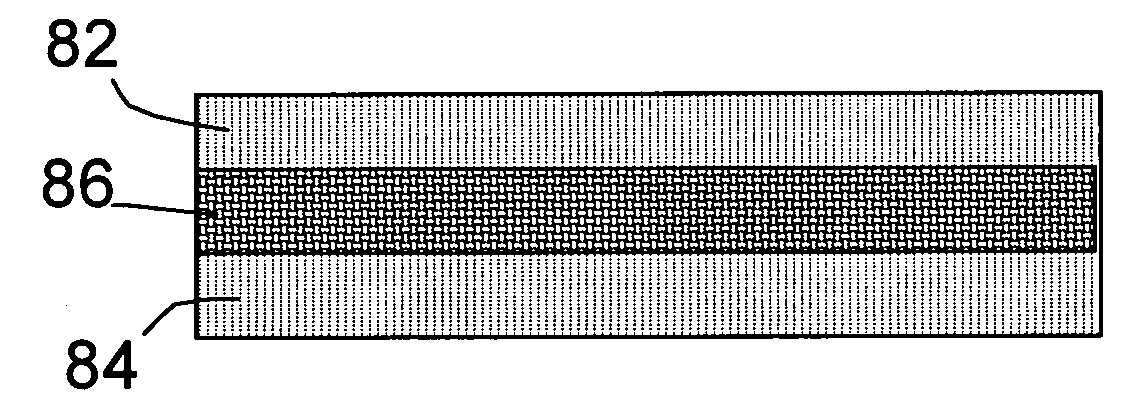Highly conductive, multi-layer composite precursor composition to fuel cell flow field plate or bipolar plate
- Summary
- Abstract
- Description
- Claims
- Application Information
AI Technical Summary
Benefits of technology
Problems solved by technology
Method used
Image
Examples
Embodiment Construction
[0034]A prior art fuel cell, as shown in FIG. 1(A), typically comprises a membrane electrode assembly 8, which comprises a proton exchange membrane 14 (PEM), an anode backing layer 10 connected to one face of the PEM 14, and a cathode backing layer 12 connected to the opposite face of PEM 14. Anode backing layer 10 is also referred to as a fluid diffusion layer or diffuser, typically made of carbon paper or carbon cloth. A platinum / ruthenium electro-catalytic film 16 is positioned at the interface between the anode backing layer and PEM 14 for promoting oxidation of the methanol fuel. Similarly, at the cathode side, there are a backing layer or diffuser 12 (e.g., carbon paper or carbon cloth) and a platinum electro-catalytic film 18 positioned at the interface between the cathode backing layer and PEM 14 for promoting reduction of the oxidant.
[0035]In practice, the proton exchange membrane in a PEM-based fuel cell is typically coated on both sides with a catalyst (e.g., Pt / Ru or Pt)...
PUM
| Property | Measurement | Unit |
|---|---|---|
| Length | aaaaa | aaaaa |
| Electrical conductivity | aaaaa | aaaaa |
| Electrical conductivity | aaaaa | aaaaa |
Abstract
Description
Claims
Application Information
 Login to View More
Login to View More - R&D Engineer
- R&D Manager
- IP Professional
- Industry Leading Data Capabilities
- Powerful AI technology
- Patent DNA Extraction
Browse by: Latest US Patents, China's latest patents, Technical Efficacy Thesaurus, Application Domain, Technology Topic, Popular Technical Reports.
© 2024 PatSnap. All rights reserved.Legal|Privacy policy|Modern Slavery Act Transparency Statement|Sitemap|About US| Contact US: help@patsnap.com










